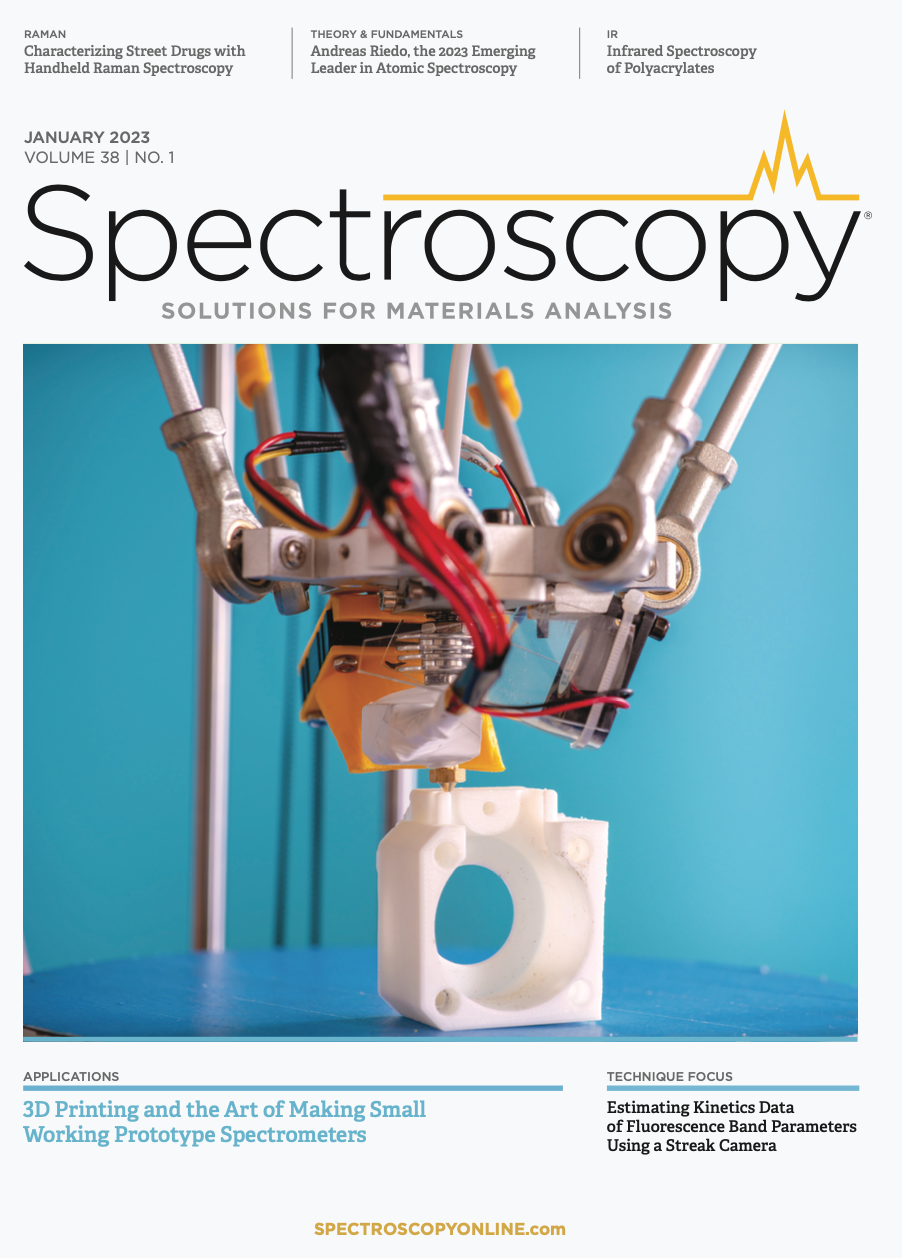Smoothing of the Time-Resolved Spectral Matrix Obtained by a Streak Camera: Estimation of the Fluorescence Band Parameters
A new method based on singular value decomposition (SVD) was applied to the denoising of the time-resolved spectral matrix (TRSM), which was obtained by a streak camera. The least informative principal components (PCs) were filtered out using the Tikhonov regularization principle. A method for determining the quasi-optimal regularization parameter was suggested. The SVD method was compared with the moving average time direction (MATD) smoothing of the TRSM. Numerical simulations and experimental study of the 3-aminophthalimide (3AP) solution in acetonitrile showed that the SVD smoothing allowed for accurate measurement of signals in peak maximum. Fitting the polynomial modified Gaussian to the smoothed fluorescent bands decreased the measurement errors of the maximum peak position and its width. This method allowed us to obtain kinetics data of the fluorescence band parameters of the 3AP spectrum in an acetonitrile solution. Flexible selection of the quasi-optimal processing parameters and a better time resolution are the main advantages of the SVD method over MATD.
Click here for a PDF of this article.About The Authors
J. Dubrovkin is with the Multidisciplinary Department, Western Galilee College, in Acre, Israel. V.I. Tomin and A. Krzysztofowicz are with the Physics Department at Pomeranian University in Słupsk, Poland. Direct correspondence to: dubrovkin@013.net.il ●

New Study Reveals Insights into Phenol’s Behavior in Ice
April 16th 2025A new study published in Spectrochimica Acta Part A by Dominik Heger and colleagues at Masaryk University reveals that phenol's photophysical properties change significantly when frozen, potentially enabling its breakdown by sunlight in icy environments.
Tracking Molecular Transport in Chromatographic Particles with Single-Molecule Fluorescence Imaging
May 18th 2012An interview with Justin Cooper, winner of a 2011 FACSS Innovation Award. Part of a new podcast series presented in collaboration with the Federation of Analytical Chemistry and Spectroscopy Societies (FACSS), in connection with SciX 2012 ? the Great Scientific Exchange, the North American conference (39th Annual) of FACSS.
New Fluorescence Model Enhances Aflatoxin Detection in Vegetable Oils
March 12th 2025A research team from Nanjing University of Finance and Economics has developed a new analytical model using fluorescence spectroscopy and neural networks to improve the detection of aflatoxin B1 (AFB1) in vegetable oils. The model effectively restores AFB1’s intrinsic fluorescence by accounting for absorption and scattering interferences from oil matrices, enhancing the accuracy and efficiency for food safety testing.
Can Fluorescence Spectroscopy Evaluate Soil Dissolved Organic Matter Dynamics?
February 20th 2025A new study published in Chemical Engineering Journal by researchers from Northeast Agricultural University in China reveals that biochar aging, influenced by environmental factors like UV exposure and wet-dry cycles, alters dissolved organic matter composition and affects its effectiveness in remediating cadmium-contaminated soil.
Geographical Traceability of Millet by Mid-Infrared Spectroscopy and Feature Extraction
February 13th 2025The study developed an effective mid-infrared spectroscopic identification model, combining principal component analysis (PCA) and support vector machine (SVM), to accurately determine the geographical origin of five types of millet with a recognition accuracy of up to 99.2% for the training set and 98.3% for the prediction set.